![]()
The architectural firm of McKim, Mead & White have been credited with defining the signature look of Gilded Age America. During the heady period of the late nineteenth and early twentieth centuries, the three partners would lead this American Renaissance which was characterized by the classical public buildings that were introduced to cities, small and large, in the northeast United States. Most prominently, their influence and talents were responsible for an appreciable number of government and institutional buildings that lend Washington D.C. and New York City the influential aura of their European counterparts.
Details of this shift in focus and design for the firm –“McKim, Mead & White: After the Shingle Style” — was the subject of the 7th Annual Architectural Symposium held in Newport this past weekend. The site, appropriately and not in-coincidentally, was the historic Newport Casino (now home to the International Tennis Hall of Fame) the architectural firm’s first commission and a significant example of the firm’s earlier structures in the Shingle Style.
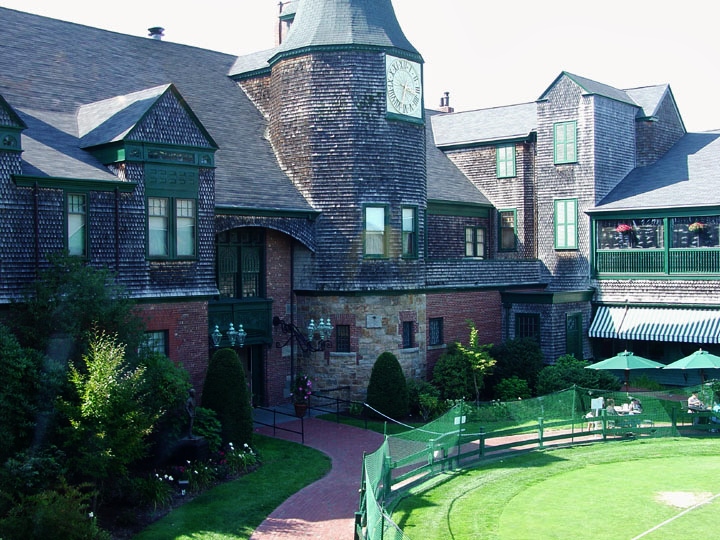
In addition to the elucidating talks by architectural historians and scholars and lunch served on the elegant horseshoe piazza overlooking the grass tennis courts…

selected private homes designed by McKim, Mead & White were opened in the afternoon for the attendees. These provided an enlightening perspective on the firm’s very active and influential part in residential work of the late 19th and early 20th centuries. Three that I visited were “Edgehill”…comfortable and charming, a personal favorite for its grounds overlooking Swiss Village.

Across the street, “Beacon Rock” is both imposing and dramatic, resembling from some angles (as below) nothing less than a Roman sea side villa. Both “Edgehill” and “Beacon Rock” benefit greatly from the talents of the Olmsted Brothers landscape design firm that conceived a subdivision of estate properties at this end of the island.
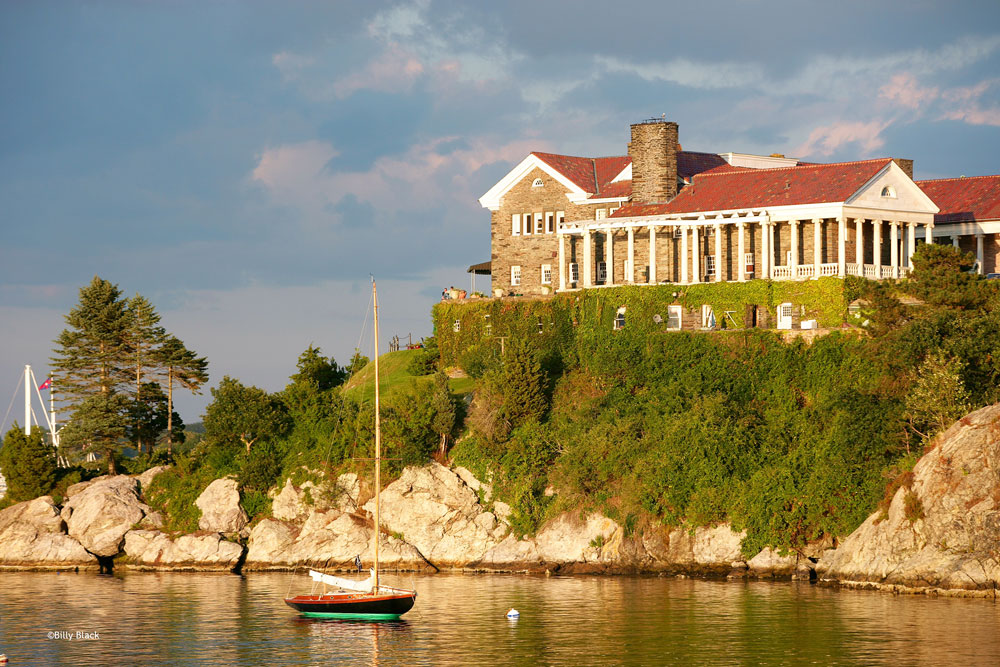
And the Governor Edgar House, in town, is a substantial example of classical motifs realized with innovative details, such as linear brick detailing and Palladian references.
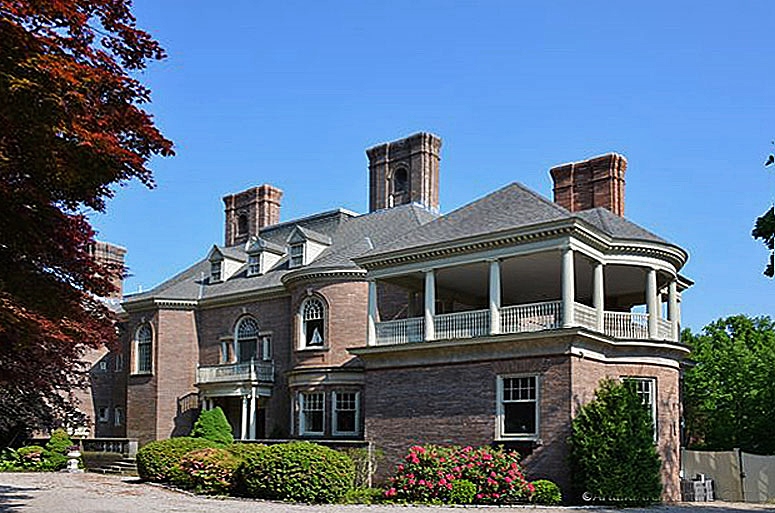
As an admirer of McKim, Mead & White, I knew that I wanted to include one of their homes when designing my recent book, Living Newport: Houses, People, Style. Alice and Jim Ross were the perfect subjects for many reasons — they were friends, and their taste level and appreciation for details in the renovation of their McKim, Mead & White home was exemplary. I thank them again as I introduce you all to the chapter from my book, “Revisting McKim, Mead & White.”

It is difficult to overstate the fame and influence of McKim, Mead & White — their Newport treasures include Rosecliff as well as Berkeley House, the Ross family home. Alice has perfected the art of living in an 1885 masterpiece by this esteemed architectural firm. Take today for instance….she has set up a trunk show for an on-the-rise young fashion designer in the spacious “living hall,” where Alice’s wonderful dahlia bouquets offset the colors in the clothes as well as her interiors; Olive, the new Havanese puppy, is running circles throughout the house; eldest daughter Harling is photographing outfits for her blog and the small, elegant silver tray with its accompanying period teapot and porcelain cups and saucers awaits guests.
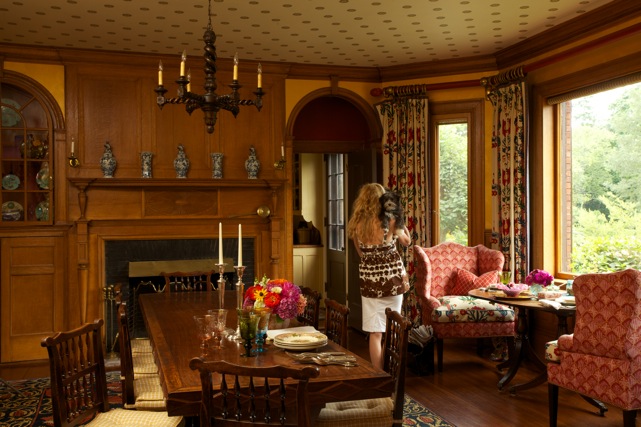
Alice loves to say that “Berkeley House spoke to me,” even though the first time she saw it she had no idea that she would ever live here. “It’s funny how life is – I like to call it ‘divine providence’–the kitchen floor tile fascinated me so much that I went home and immediately drew it, putting the sketch in a scrapbook, thinking ‘if I ever do a kitchen…’ A few years later, after we’d moved in, I found a new run of the same tiles, using them to expand the larder in the kitchen.”


Berkeley House is “quirky,” a compliment in Alice’s words, “and I guess I am, too,” she adds with a laugh. Built for an old Newport family, the patriarch, Edward King, had made his fortune in the China trade. But Berkeley House’s “quirkiness,” representing a transitional period for McKim, Mead & White from shingled facades to stone in the Beaux Arts style, is exactly what sets it apart from other Newport houses. The interiors followed suit, addressing the sophisticated needs and tastes of the new moguls of the “Gilded Age.”
When chatting about the aesthetic enjoyment of their home, Alice begins with the spacious entry hall, a McKim, Mead & White signature. Used in its day as a central gathering place, or “living hall,” it is the precursor to our modern day “great room.” Other highlights are pointed out, but it’s clear that she has a favorite. “They were capable of transforming the ordinary into the extraordinary. The stairwell here is a case in point. It’s a little space, crowned by an elaborate Palladian window, but it has a ‘story line’ providing expansiveness, glamour and, so importantly, anticipation. Ascending and descending the stairs is an experience all its own, giving me a chance to admire the elegant details of the twisted newels and balusters.”
Alice continues, “McKim, Mead & White left a visual trail of which we are all pupils. I really do feel like an apprentice, called to respect these talented architects of turn-of-the-century America. As I was decorating the house, I made so many unbelievable discoveries – like the fire back for the entry hall fireplace, an original to Berkeley House that I bought at a Mike Corcoran auction. Stanford White was known to be a salvager, so I think he would approve.’
“And the rug in Lizzy’s bedroom is an exact copy of an old one at Kingscote (another King family home) which she can see from her corner window. I chose to begin my design process with this piece specifically because I wanted to ‘tether’ my aesthetic to the history of the house’s original commissioners.”
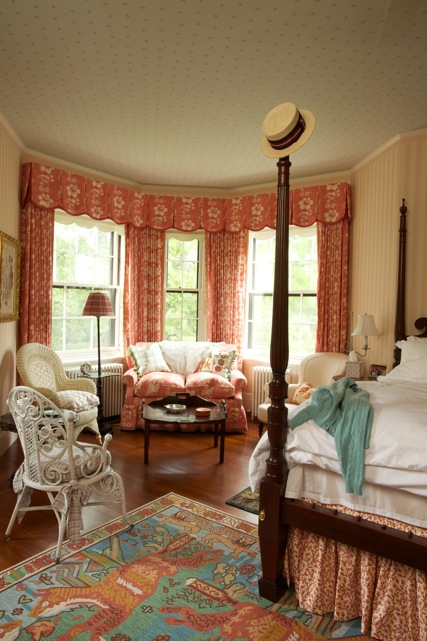
(A coincidental bit of history deserves mention here. Frederick King, the son of Leroy King who commissioned Berkeley House, attended Harvard with Stanford White’s only son, Larry. The two classmates dined with the architect on June 25, 1906, the night White was shot and killed by the husband of one of his former lovers, an incident that titillated New York society.)
Removing the white paint in the foyer and restoring it to its original handsome quarter sawn oak, its deep honey color now adding such warmth and appeal to first impressions of the interiors, was a top priority for Alice.“ I chose to take inspiration from the mini renaissance of creativity that was taking place in the mid to late nineteenth century, updating it with more modern colors and textures.” Alice has a sure hand with the effective, but difficult challenge of mixing patterns — stripes, toiles, paisley, ikat, pairing rugs and wallpaper (to include all ceilings.) “Pattern is a visual jazz, and like jazz, the overlapping sounds create a complexity that is entertaining,” Alice offers.

Her design talents include a specific interest in fixtures, particularly in the bathrooms and kitchen, a play once again on nineteenth-century creative sensibilities “in which nothing was too ordinary to be beautiful or decorative.” Alice recounts being in the basement early on in the design process and discovering some original plumbing pipes, detailed with scrollwork. Berkeley House provided many opportunities to test her talents, given its nine bathrooms, and their architectural details like sloped ceilings.
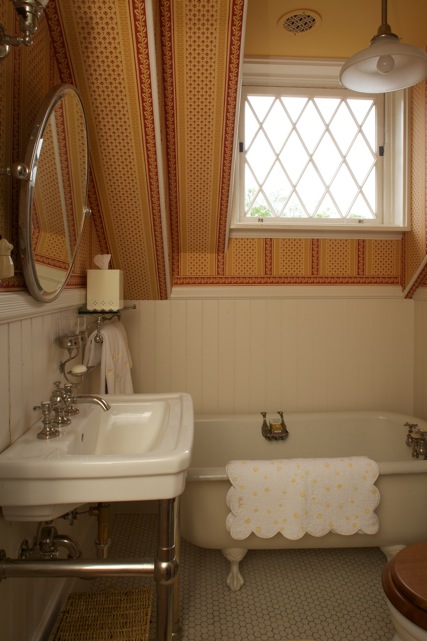
No wonder that the Ross family finds many reasons to slip away from city life in Manhattan (Jim is the founding partner of a real estate private equity firm.). “How they live” reads as though they are taking cues from the King family era. The two younger daughters love to cook; on the day that I was photographing, Lizzy had just returned from cooking school in Rome and was helping Tully assemble blueberry pies and tarts on the hefty center table in the kitchen, the surface of which they would use to play board games and cards while waiting for their pastries to cook. In the background, Harling was working on her blog, mytomayto.com, a tongue-in-cheek fashion website, young and fun, with self-deprecating witticisms on what drives personal taste.
As I leave that afternoon, it occurs to me that Stanford White would feel right at home today in Berkeley House.
I salute the Architectural Symposium for their contribution to the continuing legacy of Newport’s storied architecture.
Featured Image Credit, Bekki Schenker/Billy Black



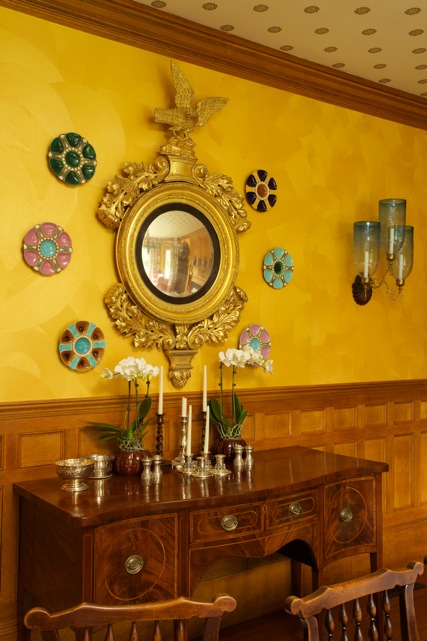

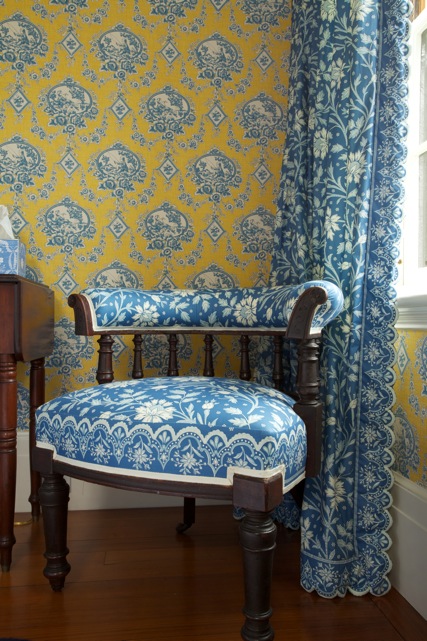

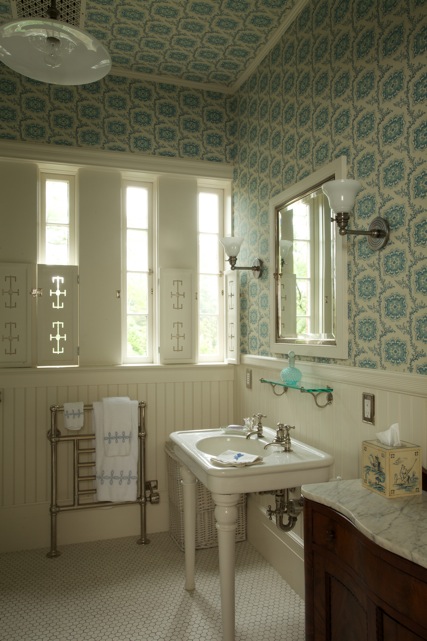


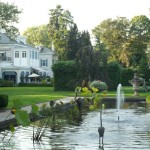


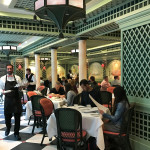

Fascinating
Thank you, Frank, from one of your biggest admirers..xo